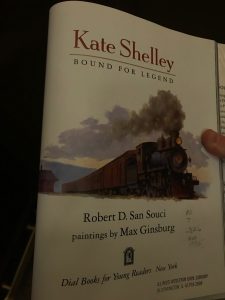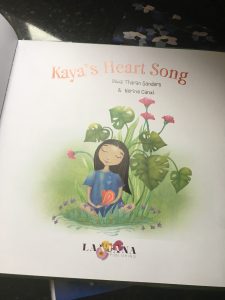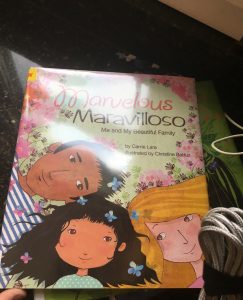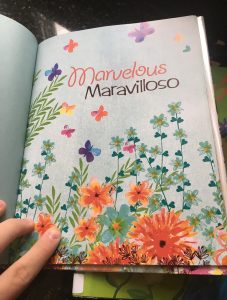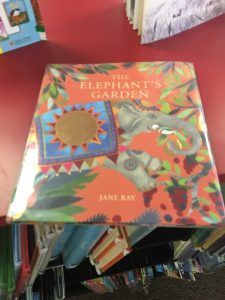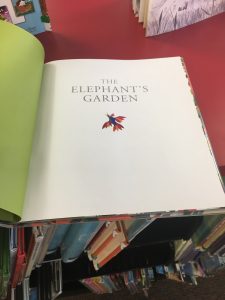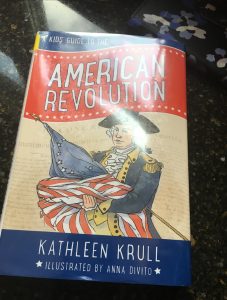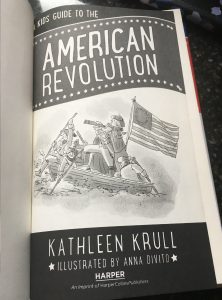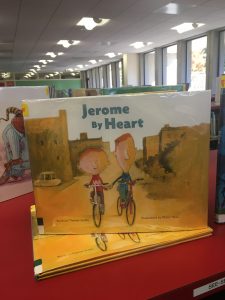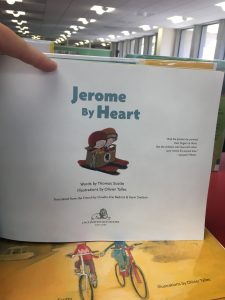Author/Illustrator: Robert D. San Souci, Max Ginsburg
Publisher and Year Number of pages: Dial Books for Young Readers, 1995, 30 pages.
Genre: Nonfiction
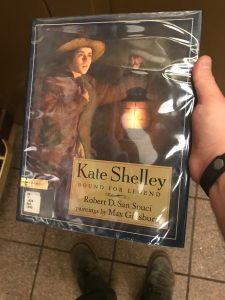
Descriptive Annotation: The cover features a detailed artistic rendering of a girl with a brown coat, tan straw hat, and an orange, glowing oil lamp typical of the mid-to-late 1800s when the book is set. The lush paintings of Iowa featured inside the book continue for the whole of the narrative, and the results are pleasing to both the historian in me for their accuracy and to my inner child due to their exciting events that really drew me in. As for the text itself, it involves the story of Kate Shelley who manages to warn another train hurtling down the tracks to her farm that there has been a wreck at her family’s property and that they need to stop in order to avoid an accident. She is an ordinary kid that just happens to have been in the right place at the right time and is eager to help in any way she can to prevent a preventable tragedy. When Kate sets off on her journey to stop the second accident, she is not helped by anybody. Despite that, she manages to locate some survivors from the wreck, and crawl over the slippery, 700-foot-high railroad bridge that leads to the other incoming train. She does so with full knowledge of the danger that awaits her: “A misstep would send me down below the ties into the flood that was boiling below. I got down on my hands and knees, carrying my useless lantern and guiding myself by the stretch of rail” (Souci, p. 18-19). Eventually, Kate makes it to the station and warns the men inside of the accident waiting to happen, collapsing soon afterward from the exhaustion her ordeal: “Much later she would learn that the train had been halted forty miles to the west, at the edge of the storm. The passengers were safe” (Souci, p. 22). Out in the cold, there are still railroad workers in trouble, and Kate gets up from her resting spot and goes out with the men from the station to help save their lives. Lucky for her and them, the rain and wind that had been blowing that whole time and causing all the trouble stops. This allows a safe rescue of the workers and for Kate to get some real rest, which lasts for a long while until she can get her strength back up: “It was nearly three months before Kate’s strength came back. During this time as she lay in bed, she was greeted by the trains that blew their whistles when they passed the Shelley farmhouse” (Souci, p. 27). She takes this and many other commendations for her bravery in stride, not yet realizing the full power of her actions in a time of need until much later in life. The father of Kate is very proud of his daughter, as is the state of Iowa and most of the country at the time.
Classroom Application: Since the book makes the idea of selfless sacrifice for others and mutual respect of all people an enormous priority, it’s an ideal text to teach lessons on being decent to one another and how to step up when the situation demands one do so. The author/illustrator also demonstrate that direct action towards a problem that needs solving is best, and always good if pursued correctly; one must work hard and think creatively in order to accomplish a “deed bound for legend” (Souci, p. 1). One possible lesson after reading the book would be to tie it into Pay It Forward campaigns, and then also review the classroom bullying standards and see if they need to be revised in order to be more selfless. Students would also do well to recognize, as Kate does, that while actions are important, the intent is what really saves the day.
Linguistic and Cultural Diversity Analysis: The book is set in Iowa, but not in the present-day that we are necessarily used to. There isn’t much of a unique cultural blend of the North American continent in those days, but the differences from our modern-day society come through in the names and clothing of the characters, and could be used to great effect to teach about the historical and present significance of the railroad industry in any history classroom, regardless of grade level. Souci does a great job explaining all this, and his words should definitely be heeded when it comes time to plan your lessons.
